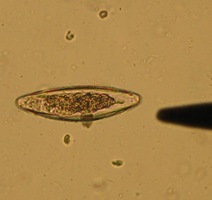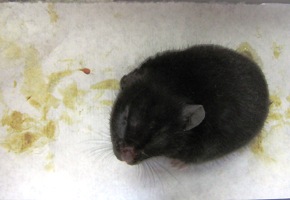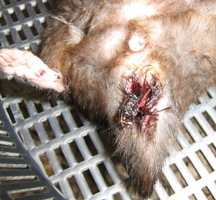Common Problems in Hamsters
Hamsters, like other pets, need veterinary care for a variety of problems. We recommend that a newly purchased hamster have an examination by a qualified veterinarian to ensure your pet is healthy.
Bring in fresh fecal samples with your pet, collected on a moist paper towel, placed in a sealed Ziploc bag, and left at room temperature for no more than 4 hr before your visit.
It is very important to act quickly when you detect a problem with your hamster as signs like diarrhea or breathing difficulties can result in death if not treated.
Demodex mite, a common cause of hair loss in hamsters.
Dwarf hamster with a severe ear infection.

A pinworm egg. Although low numbers of pinworms are normal in hamsters, they can cause diarrhea, hair loss around the anus, and death when they reach high levels.
A tapeworm proglottid (bundle of eggs) from a Syrian hamster. These small moving white objects may be found on your hands after holding an infected hamster. One common species of hamster tapeworm can be passed to people so it is important to have your hamster checked for tapeworms and treated appropriately.

Wet Tail, or diarrhea, is a common disorder of hamsters that if left untreated often leads to dehydration, and death. There are many possible causes of wet tail so it is important to see a veterinarian to properly diagnose your sick hamster. Do not "wait it out" with wet tail as a hamster can die within a few days once diarrhea has started.

This hamster died from a prolapsed rectum that resulted from untreated wet tail.

A bloody discharge in a female hamster may indicate ovarian or uterine problems, a bladder infection, or some other cause.
A uterine tumor that has prolapsed out of a hamster's vulva. This disease can be prevented by spaying a hamster before it is 4 months of age.



